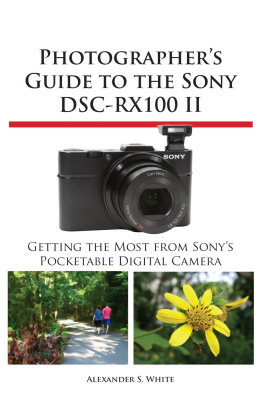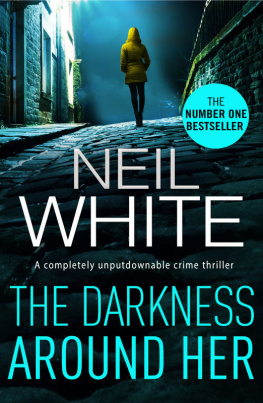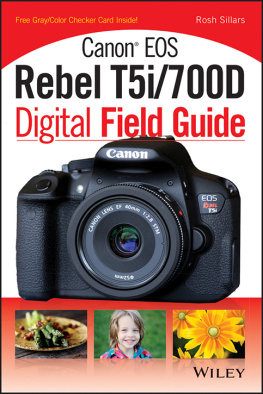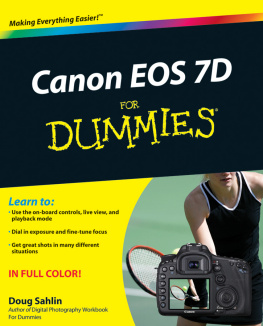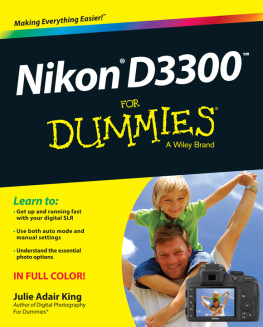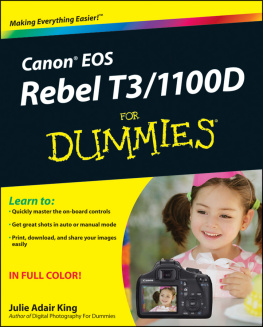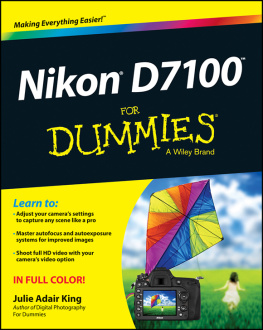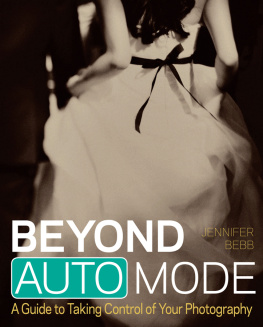
Photographers Guide to
the Sony DSC-RX100 II
Getting the Most from Sonys
Pocketable Digital Camera
Alexander S. White
WHITE KNIGHT PRESS
HENRICO, VIRGINIA
Copyright 2013 by Alexander S. White.
All rights reserved.
No part of this publication may be reproduced, stored in a retrieval system or transmitted in any form or by any means, electronic, mechanical, photocopying, recording or otherwise, without the prior written permission of the copyright holder, except for brief quotations used in a review.
The publisher does not assume responsibility for any damage or injury to property or person that results from the use of any of the advice, information, or suggestions contained in this book. Although the information in this book has been checked carefully for errors, the information is not guaranteed. Corrections and updates will be posted as needed at whiteknightpress.com.
Product names, brand names, and company names mentioned in this book are protected by trademarks, which are acknowledged.
Published by
White Knight Press
9704 Old Club Trace
Henrico, Virginia 23238
www.whiteknightpress.com
ISBN: 978-1-937986-18-6 (paperback)
978-1-937986-19-3 (e-book)
To my wife, Clenise.
Authors Note
I n 2012, after having written several guide books to advanced compact cameras, I read about the forthcoming model from Sony, the DSC-RX100. It seemed clear from preview articles and discussions about that model that Sony had created a winner. Subsequent events confirmed that view, and I published my guide book for the RX100 in October of that year.
When Sony announced in June 2013 that it was releasing an updated version of the RX100, I had no hesitation in deciding to write a book about the RX100 II. With the new model, Sony preserved the features that made the original version so popular, including pocketable size, great image quality, and strong features for creative shooting, while adding a few key enhancements that addressed concerns expressed by users of the RX100. With the addition of Wi-Fi capability, a hot shoe that can accept a flash, an electronic viewfinder, and other accessories, along with improvements to the image sensor and display screen, the ability to use a wired remote control, and some other tweaks to the controls, the new camera remains at or near the top of its class in the world of compact cameras.
I used a production model of the RX100 II to take all of the sample photographs included in this guide. I believe it is important to give readers the benefit of seeing photographs that were taken by the camera that is being discussed, even when images taken by another model could illustrate a particular feature adequately.
If you have seen any of my previous camera guides, you may notice that the interior of this book has a significantly different appearance than the earlier titles. This new look resulted from the efforts of Jill Cooper, an editor and book designer who I found through Elance. I am very grateful to Jill for applying her great expertise in improving the books layout and contributing to its accuracy through her editing skills.
Finally, as with all of my earlier books, the greatest support in every possible way, from joining me on trips to take photographs for this book to checking and proofreading the final text, has come from my wife, Clenise.
Introduction
T his book is a guide to the operation of the Sony Cyber-shot DSC-RX100 II digital camera, one of the most capable compact digital cameras on the market today. You probably already believe the RX100 II is one of the best small cameras available, but Ill still outline some features that make this camera stand out above other advanced compact models.
As with Sonys earlier model, the RX100, the single factor that distinguishes the RX100 II from the large number of competing compacts is its very small size. This camera, unlike most current models with such advanced features, is not just portable but pocketable. It will fit easily into a pocket or purse and can be held unobtrusively in one hand when you dont want to call attention to your camera. But, despite this great degree of portability, the camera doesnt give up much in the way of capability.
Perhaps the greatest feature of the RX100 II apart from its small size is the relatively large size of its image sensor, the crucial component where light is gathered to form your images and videos. This very small camera comes equipped with a one-inch-type sensor, which is twice as large as the sensor in the Fujifilm X20, for example, and more than twice as large as those in many other small cameras in this class. The sensor in the upgraded model, using back-side illuminated technology, is more sensitive to light than the original version; therefore, you can use ISO settings as high as 25600. The RX100 II boasts 20.2 megapixels of effective resolution, and it has a 3-inch (7.5-cm) LCD display, which is capable of tilting up or down, with more than 1,000,000 pixels of resolution.
The RX100 II also is well equipped with advanced shooting features. You can set the camera to its Intelligent Auto or Superior Auto shooting mode and get great results most of the time with no further settings. However, the camera also offers full manual control of focus and exposure, continuous shooting, exposure bracketing, Raw format, excellent low-light performance, and numerous special features, including a variety of Scene mode choices and Picture Effect settings. The RX100 II, like many of its contemporaries, includes a built-in HDR (high dynamic range) shooting option. The RX100 II also provides HD (high-definition) video shooting with the ability to control aperture and shutter speed while recording movies.
The camera includes a hot shoe that can accept an external flash, high-resolution electronic viewfinder, stereo microphone, external LCD display, or other items. The RX100 II includes Wi-Fi (wireless) connectivity with the ability to connect to compatible smartphones and tablets using the very convenient near field communication (NFC) system, which lets you just touch two devices together to connect them wirelessly.
The RX100 II is not the ideal tool for all situations, of course. For example, if you want to photograph wildlife or other subjects from a distance, you do not have much telephoto power with the modest zoom range of this camera: 28mm to 100mm. The ability to control the camera remotely by Wi-Fi is quite limited, and the control buttons are quite small, making it difficult to press the correct one at times. I have to say, though, that with this updated model, Sony has addressed three of the shortcomings I mentioned in my guide to the RX100: the lack of a hot shoe, the inability to attach filters, and the problem of inadvertently pressing the red Movie button. The new camera, as noted above, has a versatile hot shoe, and Sony now sells an optional filter adapter. In addition, it is possible to lock out the Movie button, so it cannot be activated accidentally.
This brief introduction to the cameras features shows that the Sony RX100 II has capabilities that should be attractive to serious photographersthose who want a camera with many options for creative control of their images that can be carried around at all times, so they will have a substantial piece of equipment with them when a picture-taking opportunity arises.
My goal is to provide a thorough guide to the cameras features, explaining how they work and when you might want to use them. The book is aimed largely at beginning and intermediate photographers who are not satisfied with the documentation that comes with the camera and who prefer a more user-friendly explanation of the cameras controls and menus. For those seeking more advanced information, I discuss some topics that go beyond the basics, and I include in the appendices information about additional resources. I will provide updates at my website, whiteknightpress.com, as warranted, and I will include further information there about the camera and its capabilities.
Next page
